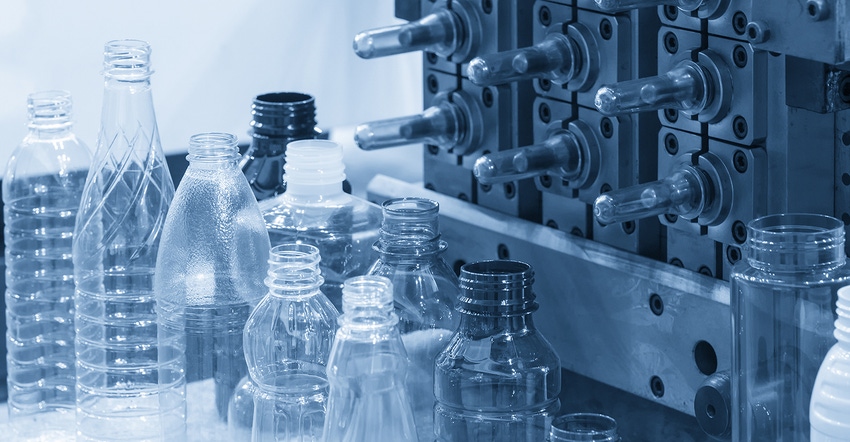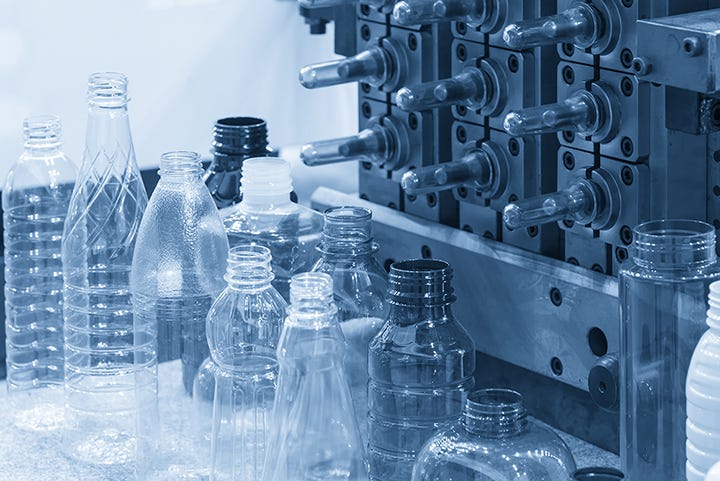Assessing the Blowmolding Suitability of rPET Resins
Key attributes for molders to evaluate and brands to know when considering adding recycled PET to your packaging.

While polyethylene terephthalate (PET) is a highly recyclable plastic resin, there are supply and technical challenges in producing packages with high recycled PET (rPET) content. Because there are multiple rPET grades and suppliers, the respective consistency and quality issues can affect color, material distribution and performance of the final package.
While there is an increasing demand for rPET, these issues can result in challenging roll outs which require a significant amount of monitoring. Additionally, many brand owners are also lightweighting their packages while increasing rPET content. This further complicates blowmolding.
One could say that there is a need to identify the basic building block of each rPET resin akin to a DNA characterization. This will enable the development of a formula that works best for each, as well as determine which ones are most suitable for a particular application. For example, a resin that is high in acetaldehyde (AA) content may not be suitable for a beverage product, yet offers acceptable attributes for soaps and other home care products.
What needs to be done?
To better understand rPET grades that are broadly characterized under food contact grades and nonfood grades, additional attributes need to be monitored. These include intrinsic viscosity (SIV), color (L*a*b*, Haze), key processing parameters as measured by crystallization kinetics and melting (Tm and Tg), black specks, IR transmission, AA, benzene and limonene should be monitored.
The IV of the incoming resin and the molded preform needs to be monitored. Different rPET grades may have different rates of IV loss under similar conditions due to their melting point and solid-stating temperature. Since all rPET grades are not the same, a recipe for each needs to be setup for both injection and blowmolding.
Because consumer perception of the final package is critical, the color and black specs are important attributes and these need to be checked via various testing protocols before molding each batch of resin into packages.
Many bottles are blowmolded on two stage equipment where the absorption of energy depends on the color of the preform. A variation in that color may swing the blowmolding process window out of range, which means the package will not meet the performance specifications.

There are methods to measure IR transmittance from plaques and hence the same plaque that was used for color and black spec measurements can be used for not only monitoring IR transmission but also AA content before molding the preforms. This saves valuable time and resources. Additionally, gas chromatography-based mass spectroscopy can warn us of the benzene and limonene levels in the resin to help make a decision on their usability. It can also help direct efforts on technology to improve decontamination levels.
So, a multi-pronged assessment of the incoming rPET grades should be conducted to understand their suitability for replacing the virgin resin in greater percentages.
Author: Chia-Jen Hsu, PhD, is a materials specialist at PTI. He has years of experience in resin characterization and analysis in both injection-molded and blowmolded articles. He has expertise in understanding the effects of incorporating recycled grades of plastic in different product categories.
About PTI: PTI is recognized worldwide as a major resource for preform and package design, package development, rapid prototyping, pre-production prototyping, and material evaluation engineering for the plastic packaging industry. For more information: www.pti-usa.com.
About the Author(s)
You May Also Like


